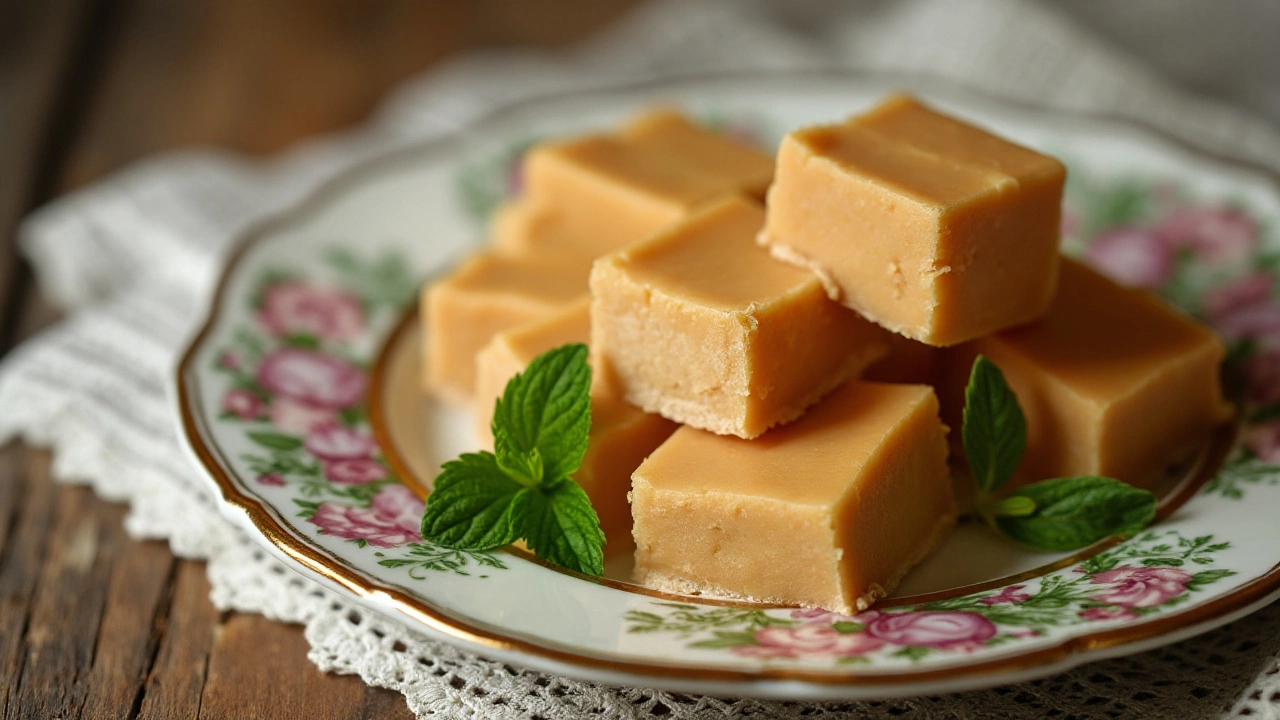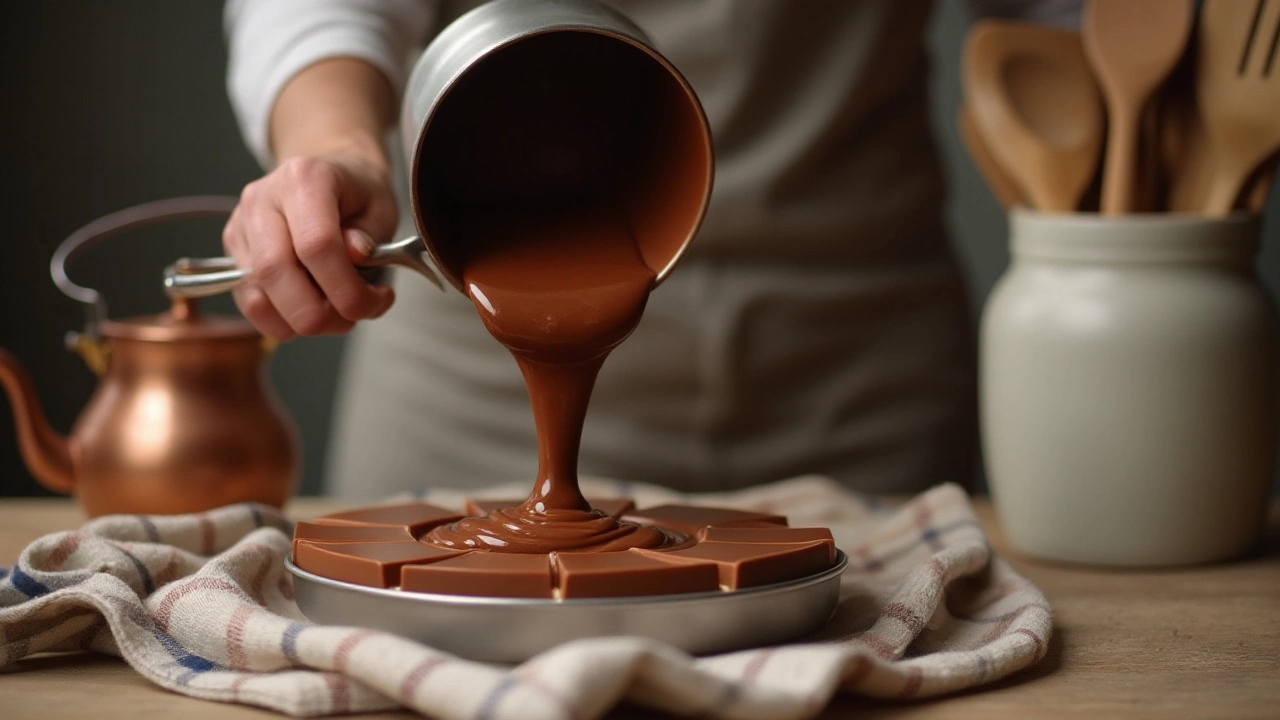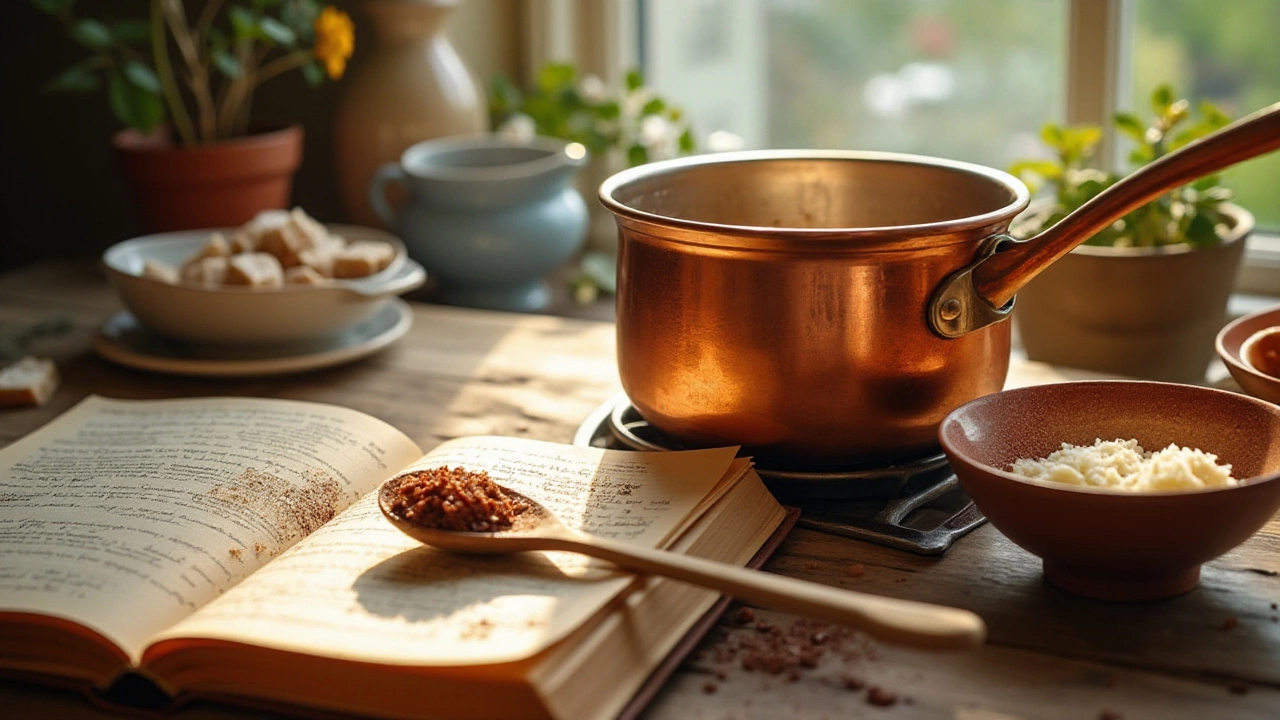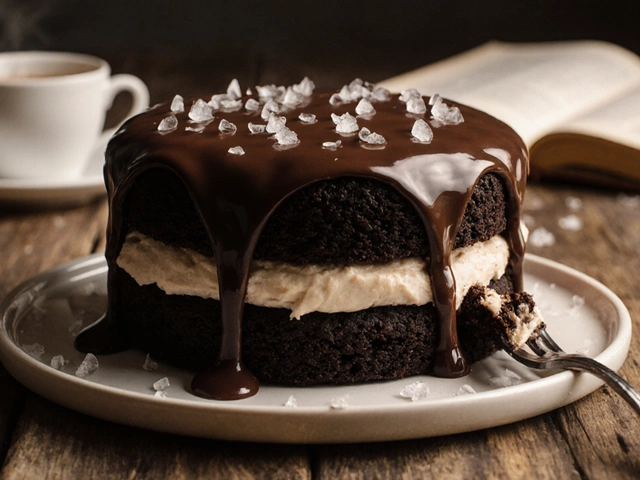Making fudge that is both smooth and melt-in-your-mouth undeniably feels like a hallmark of kitchen mastery. Yet, the art of fudge is less about labor-intensive effort and more about knowing which strings to pull to evoke its magical transformation. Let’s dive into what leads to an indulgent treat that, when done right, makes you feel like an alchemist turning base ingredients into sweet gold.
At the heart of any great fudge lies a balance of sugar, cream, and chocolate. But beyond mere ingredients lies a technique that can often feel elusive. Understanding how these elements bind together gives you command over creating the velvety texture that defines truly superior fudge. This isn't merely stirring and hoping for the best; it's about precision, patience, and little secrets passed down through generations.
Temperature control is pivotal—perhaps the most critical aspect of fudge creation. The science behind reaching the perfect temperature without inducing unwanted crystallization is what makes every bite a testament to one’s meticulousness. Here, we will explore some of the tips and techniques that offer stability and flavor consistency, ensuring your fudge is always the highlight of any gathering or a spontaneous treat at home.
Armed with an understanding and a few careful hints, anyone can transition from a novice to a fudge maestro. And once you've mastered the classic, the world of flavors waits—think beyond traditional chocolate, into realms of citrus, nuts, and spices, making each batch an adventure of its own.
- Understanding Fudge Ingredients
- Cooking Temperatures and Tools
- Avoiding Common Mistakes
- Creative Flavor Variations
Understanding Fudge Ingredients
The cornerstone of crafting exceptional fudge lies in understanding the essential ingredients and how they interact to create that perfect, delectable square. It all starts with sugar, which serves as the backbone of fudge’s exquisite sweetness and texture. The right kind of sugar, usually granulated, is crucial because it melts smoothly and gives the fudge its characteristic firmness and sheen. When melted, sugar coats the potentiating molecules around it, acting like glue that binds all the elements together to give the end product a glossy finish. It's not uncommon for newcomers to misjudge the amount needed, leading to either a gritty or overly soft texture that doesn't quite hit the mark.
Dairy, often in the form of sweetened condensed milk or heavy cream, isn’t just about adding rich flavors; it's about integrating fat, which tempers the sugar's crystalline nature, allowing for a creamy consistency. The fat content plays a dual role - it not only provides that luscious, smooth texture but also acts as a buffer that prevents the sugar from crystallizing too quickly, which can ruin the desired smoothness. Sometimes butter is added, which not only adds to the richness but also contributes a subtle creaminess that enhances the overall tapestry of flavors.
Chocolate is the quintessential star in a traditional fudge recipe. Ensuring the use of high-quality chocolate—be it dark, milk, or even white—can make a significant difference. The cocoa butter content and the exact nature of the chocolate’s melting profile can affect how the fudge sets once it cools. The chocolate, in tandem with sugar, creates complex flavor profiles as they intermingle during cooking, which when done right, turn these ingredients into a harmonious blend of delight. Indeed, “quality over quantity” should be the mantra when it comes to selecting the chocolate for an unforgettable chocolate fudge.
Culinary expert and pastry chef, Alice Medrich, often emphasizes the importance of ingredient quality. She suggests that, "using the best chocolate you can afford pays off in dividends when it comes to flavor and texture."
In many recipes, vanilla extract is added for a whisper of aromatic sweetness that elevates the chocolate’s natural flavors. This extract needs to be added judiciously - too little may render it ineffective whereas too much can overpower the subtle notes of the other ingredients. It's the hero behind the scenes that gracefully ties the comforting notes of fudge together, making it an accessible delight that invites you with each bite. Sensibility with such elements can transform ordinary fudge into something quite memorable.

Cooking Temperatures and Tools
Managing cooking temperatures is the unsung hero of achieving perfect fudge. It's more scientific precision than intuition, as deviating from the ideal temperature is like piloting a plane without a compass. A candy thermometer is indispensable, ensuring the sweet blend reaches the necessary 234°F to 236°F, often referred to as the soft-ball stage. This range is crucial as the combination of sugar and cream enters a state that, once cooled, transforms into that coveted creamy delight. Like a seasoned traveler who never leaves without a map, you cannot underestimate the importance of this small, yet mighty tool.
Understanding the mechanics of this process unfolds the secret behind why fudge sometimes greets you with grainy disappointment. The granules in sugar need to dissolve entirely during the heating phase, which means stirring cautiously until it is uniformly melted. The goal is to prevent the crystallization of sugar until it sets. One way to ensure this is to resist the urge to scrape the sides of the saucepan as the mixture cools, which, although tempting, can reintroduce sugar crystals that have avoided dissolution. Havoc ensues if they make their way back into the mixture at the wrong time.
Tools like a heavy-bottomed saucepan lend themselves to this endeavor by distributing heat evenly, crucial for preventing hot spots that can burn sugar beyond repair. Wooden spoons are favored over metal when stirring as they're less likely to transfer heat quickly, reducing any risk of overheating. An often overlooked but veteran tip is running cold water on the back of the spoon then quickly touching it to the mixture. If, upon careful removal, a firm yet pliable ball forms, it's a sign that conditions are precisely right. Some chefs recall Julia Child's philosophy: "With enough butter, anything is good." For fudge, it's with precise temperature, anything can be remarkable.
"The best candy-making is in the small details," notes famed chocolatier Jacques Torres, emphasizing that attention and patience bridge the gap between good fudge and great fudge.
Once you step beyond the scientific hurdles, creativity in fudge recipes can take flight. Any kitchen tops of goodies like nuts, dried fruits, or a splash of caramel will find a place within rich chocolate expanses. Embracing the fundamentals of temperature and using reliable, trusty tools, you’re free to explore flavors that echo personal flair or seasonal fancies. The combination of knowledge and experimentation ensures every endeavor is less about following a recipe and more about understanding a delicious craft.

Avoiding Common Mistakes
When it comes to fudge recipe mastery, sidestepping some frequent pitfalls can ensure your efforts result in that smooth, creamy texture we all crave. One major misstep many home cooks encounter is incorrect temperature control. The absence of a reliable candy thermometer can be disastrous because the precise temperature is crucial for the desired consistency. Fudge should be cooked to a 'soft ball' stage, which is about 234°F (112°C). Longer cooking or insufficient heat could result in crystallization or a grainy fudge. To beat this challenge, having a thermometer on hand is indispensable, and not just any—the traditional mercury or digital thermometer can ensure accuracy.
If you’ve ever wondered why your creamy fudge turns to grainy bites, the answer often lies in stirring. Excessive stirring especially when the sugar is dissolving, introduces unwanted air and prompts premature crystallization. As the mixture starts heating, it’s critical to refrain from stirring too often. Wait until it has cooled to about 110°F before setting your spoon to work. At this point, you stir vigorously until creaminess ensues. Also, adding butter at the right moment influences the texture significantly. Add it at the end of the boiling stage but incorporate it after the boiling has ceased.
Then we have the matter of ingredients—not all sugar and chocolate are created equal. White sugar should be the base sweetener, but for a twist, trying a combo with some brown sugar can introduce a subtle caramel note. As for chocolate, quality is key. Higher cocoa content can enhance the robustness of your flavor, but using a blend of semi-sweet and bittersweet chocolate can balance flavor and sweetness. Be cautious about using imitation extracts; they lack the punch you'd expect from pure vanilla or almond extracts. Investing in genuine ingredients can make all the difference.
"Patience is the secret to good food. Rushing through is the enemy of flavor," - stated by culinary expert Julia Child, highlighting the essence of cooking with deliberate care.
Lastly, believe it or not, the weather can play a role! Humidity can ruin batches by affecting sugar's behavior during the cooling process. Many experts advocate avoiding fudge making on rainy days for this reason. Instead, joist your skills on drier days, and see how your batches take shape. If the weather is unavoidable, reducing cooking time slightly can offset effects. These might seem like minor factors, but they all add up in your quest for the perfect fudge. Remember, every trial, even those that fail, is a step closer to fudge perfection.

Creative Flavor Variations
Diving into the world of fudge flavor variations opens up a galaxy of possibilities, where your imagination pairs with taste to create something absolutely memorable. Adding a touch of adventure to your fudge recipe transforms the traditional into something truly extraordinary. Think of the classic vanilla bean fudge as a canvas, ripe for exploration, and ready to take on new dimensions with each ingredient you choose to integrate. When approaching flavor experimentation, consider the balance and harmony of tastes. Start with complementary components that mirror or enhance the primary notes of your fudge base. For instance, introducing hints of lavender creates an aromatic allure that adds depth and sophistication, providing an experience as much about scent as it is about taste.
Then there’s the allure of spices. A dash of cinnamon or nutmeg can transition a sweet creamy fudge into a warm, holiday sensation, perfect for cozy winter nights. The trick here is subtlety—too much can overpower, but just the right amount weaves a magical, intricate tapestry of flavors. More adventurous palates might venture into incorporating ground chili or cayenne for a spicy kick. Such ingredients provide an exciting counterpoint to the richness of chocolate, creating layers that dance on the tongue. The sensation of heat juxtaposed against the cool, creamy texture of fudge is an unexpected but delightful encounter.
Another promising realm of creativity lies in textures. Introducing nuts, seeds, or even pretzels offers a delightful crunch that contrasts with the smoothness of the fudge. Pecans, hazelnuts, and almonds not only provide texture but also a nutty warmth that complements the sweetness. Pretzels introduce a salty counterpart, offering a complex flavor profile that is utterly addictive.
"Adding texture to fudge elevates its appeal," says culinary expert Claire Saffitz. "It’s about creating a sensory experience that transcends the ordinary."This is your opportunity to think beyond the norm, where one choice can redefine your perfect fudge into a personal signature statement.
For an especially decadent approach, consider integrating spirits or liqueurs. A rich bourbon or velvety Bailey’s can enhance both flavor and aroma, making your fudge sophisticated and layered. It intertwines with the base ingredients to enhance them in surprising ways. Be careful with quantities; you’d like the liqueur to suggest rather than declare its presence. Creative variations needn’t stop at taste: experiment with presentation, layering differently colored fudges, or using molds for delightful shapes. As you explore these flavor variations, let your intuition guide you. Each new batch is an opportunity to discover something uniquely yours, a personal signature on what remains a beloved classic in the world of homemade sweets.





